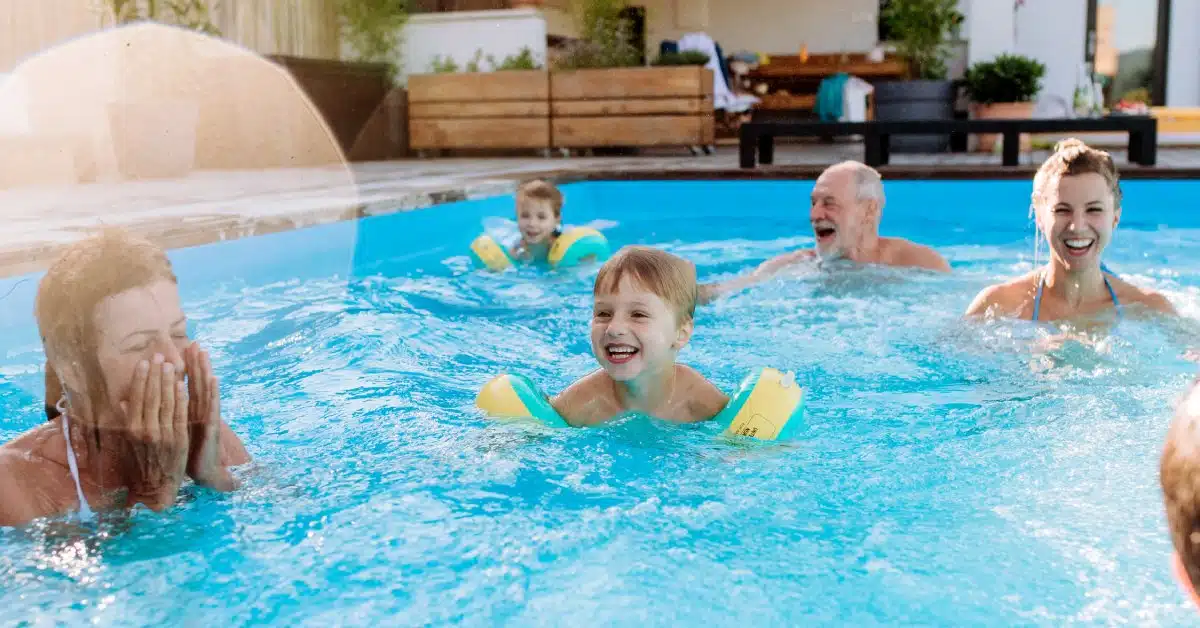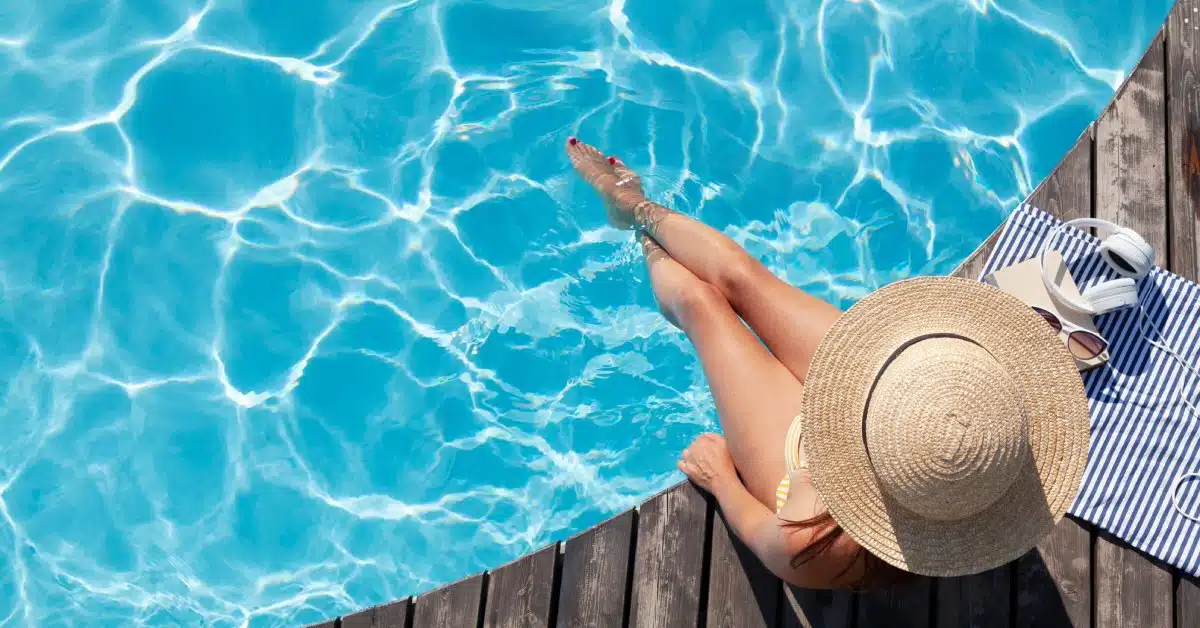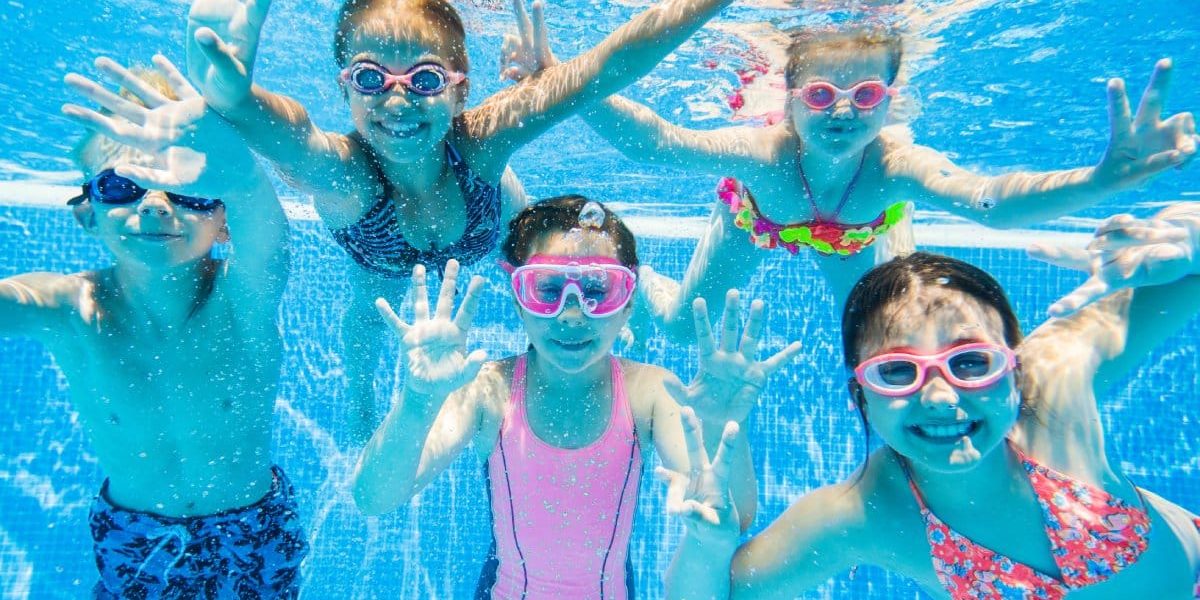Building a swimming pool is one of the most exciting home improvements you can make, but choosing the perfect pool depth for your lifestyle requires careful consideration. The depth of your pool affects everything from safety and usability to maintenance costs and overall enjoyment. Understanding how different depths serve different purposes will help you create the perfect aquatic retreat for your home.
Pool depth isn’t a one-size-fits-all decision. Your choice should reflect how you and your family plan to use the space, considering factors like age ranges, swimming abilities, and intended activities. The right depth can transform your pool from a simple water feature into a versatile space that grows with your family’s changing needs over the years.
Understanding Pool Depth Basics
Swimming pools typically fall into three depth ranges, each serving distinct purposes and user groups. Shallow pools range from 3 to 4 feet deep, providing safe spaces for children, non-swimmers, and various water activities that don’t require full submersion. These depths allow most adults to stand comfortably while keeping heads above water.
Medium-depth pools span from 4 to 6 feet, offering versatility for both standing and swimming activities. This range accommodates casual swimming, water games, and provides enough depth for diving boards in some configurations, though local codes may vary regarding diving requirements.
Deep pools extend from 6 to 12 feet or more, designed primarily for serious swimmers, diving, and advanced water sports. These depths support lap swimming, underwater activities, and competitive training while requiring stronger swimming skills and greater supervision for safety.
Key Considerations for Pool Depth Selection
Age and Swimming Ability
Your household composition significantly influences ideal pool depth. Families with young children benefit from shallower sections where kids can touch the bottom comfortably, building confidence and reducing drowning risks. Non-swimmers of any age appreciate depths that allow standing while participating in water activities.
Experienced swimmers often prefer deeper water for unrestricted movement and diving capabilities. However, even strong swimmers appreciate varied depths that accommodate different activities and comfort levels throughout their pool experience.

Intended Use and Activities
Recreation-focused pools serve families who enjoy casual swimming, games, and social gatherings. These pools often benefit from multiple depth zones, providing shallow areas for relaxation and children’s play alongside deeper sections for more active swimming.
Exercise enthusiasts require different depth considerations. Lap swimmers need consistent depths between 4 to 6 feet to maintain proper stroke mechanics without touching the bottom. Water aerobics participants typically prefer 4 to 5 feet, allowing full-body workouts while maintaining stability.
Therapeutic applications call for specific depth ranges. Physical therapy and rehabilitation exercises often work best in 3 to 4 feet of water, providing resistance while ensuring safety and stability for users with mobility challenges.
Safety Considerations
Pool depth directly impacts safety protocols and supervision requirements. Shallow areas reduce drowning risks but require adequate space to prevent overcrowding. Deeper sections demand stronger swimming skills and more vigilant supervision, particularly when children are present.
Consider your comfort level with water safety management. Pools with extreme depth variations require clear visual boundaries and potentially additional safety equipment like rope barriers or warning systems to help users understand depth changes.
Pool Depth Recommendations by User Type
Families With Young Children
Households with children under 12 benefit most from pools with maximum depths of 4 to 5 feet. This range allows parents to supervise effectively while giving children room to develop swimming skills safely. Many families choose pools with gradual depth transitions, starting at 3 feet and gradually reaching 5 feet at the deepest point.
Consider including a dedicated shallow zone of 2 to 3 feet for toddlers and beginning swimmers. This area provides safe play space while adults can easily assist or rescue if needed. Clearly define and separate the shallow zone from deeper areas to prevent accidental movement into unsafe depths.
Avid Swimmers
Serious swimmers require pools designed for performance and training. Competitive swimmers typically prefer depths between 4 to 6 feet, providing adequate clearance for flip turns and stroke technique without excessive depth that complicates pool maintenance or increases construction costs.
Diving enthusiasts need significantly deeper water, with minimum depths of 8 feet for low diving boards and up to 12 feet or more for higher platforms. However, diving pools require specialized design considerations and may be subject to local regulations regarding safety features and construction standards.
Seniors and Mobility-Conscious Users
Older adults and individuals with mobility limitations often find the greatest benefit in pools with depths between 3 to 4.5 feet. This range supports water exercise programs that reduce joint stress while providing cardiovascular benefits. The depth allows users to maintain stability while moving freely through the water.
Therapeutic pools for seniors should include easy entry and exit points such as gradual steps or ramps. Consider incorporating seating areas within the pool at various depths, allowing users to rest while remaining in the water during exercise sessions.

Additional Pool Features To Consider
Gradual Slope Design
Rather than dramatic depth changes, many pool owners prefer gradual slope designs that transition smoothly from shallow to deep areas. Beach entries start at zero depth and gradually slope to swimming depth, mimicking natural water bodies and providing comfortable access for all ability levels.
Sloped pool floors eliminate the jarring transition between shallow and deep ends, reducing injury risks from unexpected depth changes. This design approach works particularly well for families with mixed swimming abilities or those who prioritize safety and accessibility.
Tiered Seating and Ledges
Built-in seating areas at various depths expand your pool’s functionality beyond swimming. Tanning ledges at 6 to 12 inches deep provide space for lounging while staying cool. Deeper bench seating at 18 to 24 inches accommodates conversation areas and rest spots during pool activities.
These features transform pools into complete outdoor living spaces, supporting social gatherings and relaxation alongside swimming activities. Strategic placement of seating areas can also provide safe zones for less confident swimmers.
Dedicated Activity Zones
Consider designing distinct zones within your pool for different activities. A shallow play area for children, a medium-depth zone for general swimming and games, and potentially a deeper section for more advanced swimming creates a multi-functional aquatic environment.
You can achieve zone separation through subtle depth changes, built-in features, or visual cues that help users understand appropriate areas for different activities. This approach maximizes pool utility while maintaining safety through clear usage boundaries.
Creating Your Perfect Pool Depth
Choosing the perfect pool depth for your lifestyle requires balancing multiple factors unique to your situation. Start by honestly assessing your family’s swimming abilities, preferred activities, and long-term needs. Consider how your pool usage might evolve as children grow or family circumstances change.
Gulf Coast Pool Consulting & Construction specializes in creating custom swimming pools tailored to your specific needs and lifestyle. Our experienced team can help you navigate depth decisions, safety considerations, and design features that maximize your pool’s value and enjoyment. Contact us to begin designing your perfect backyard oasis!

